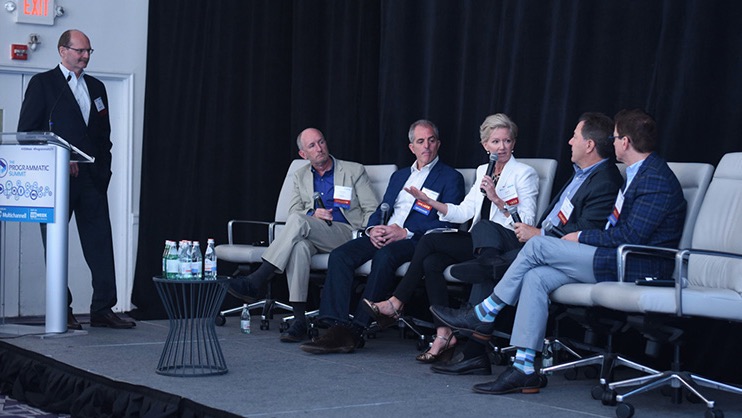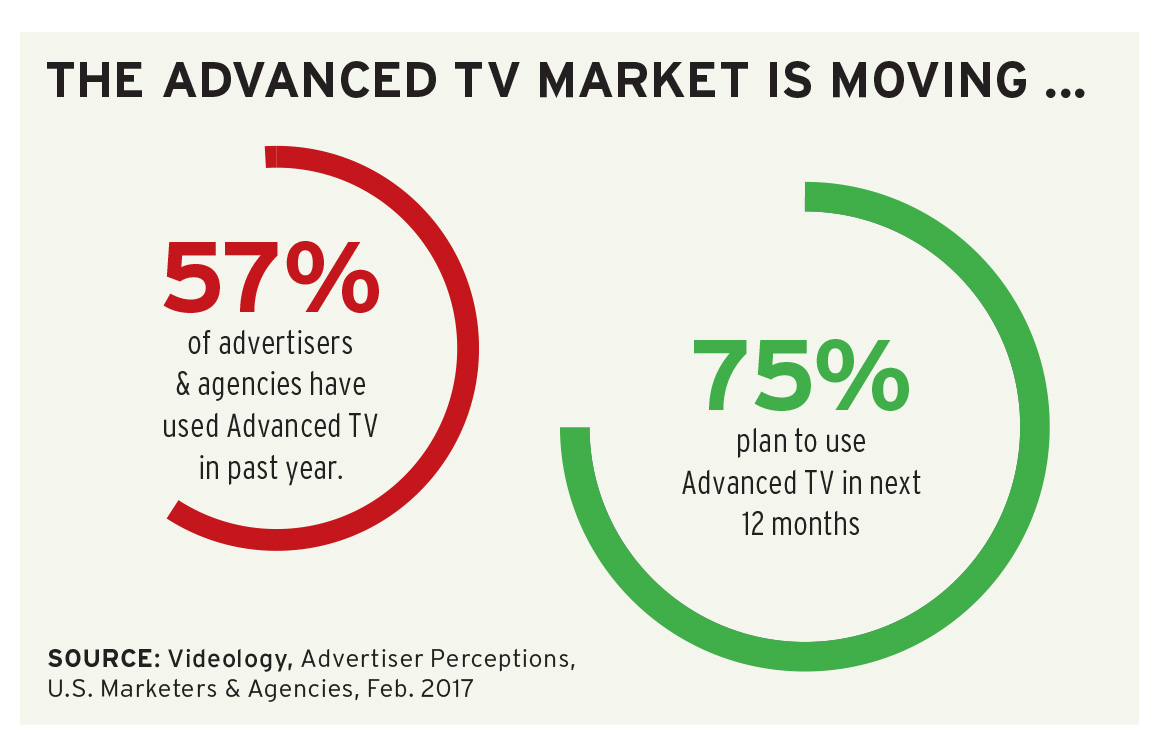Local TV Seeks Ways to Play to Its Strengths

The industry is taking its time weighing the positives of automated advertising, and local TV has to fully buy into the form. That will require finding a way to leverage local media’s key advantage — relationship building — while recognizing the benefits of technology (read: data), according to a panel of industry insiders.
“On the local marketplace, to be successful, you have to have automation, you have to have people that interchange with machines,” said Brendan Condon, CEO of AdMore, explaining that automated platforms provide advertisers channels to audiences they don’t reach via conventional means.
Condon’s comments were part of a panel discussion at the Programmatic Summit, held June 13 in New York as part of B&C and Multichannel News’ VidWeek, during which participants took a big-picture look at local TV, and how automated advertising could benefit the industry.
Participants agreed that automated advertising is an inevitability — and ultimately a benefit — for local TV, which, in some ways, is lagging behind other mediums in rolling out the platform.
There are reasons for that: local TV sales is rooted in conventions such as relationships and community-building, and to add technology that could potentially dilute this plus would be detrimental to the industry, panelists said.
“The smaller buyers, the more local buyers … are going to need the help of that local linear broadcaster. That’s their hometown,” Mark Gorman, CEO of Matrix Solutions, said. “In that sense, the local folks do have an advantage.”
Gorman added that it behooves local broadcasters to integrate automation in a way that allows them to leverage the benefits — giving national advertisers the ability to target viewers, for instance — while maintaining conventional methods that work.
Broadcasting & Cable Newsletter
The smarter way to stay on top of broadcasting and cable industry. Sign up below
“It’s both local people as well as technology,” Gorman said. “You can’t do this without people.”
David Kline, president of ad sales of Spectrum Reach, the ad-sales arm of Charter Communications, said local TV has another key bragging right: reach. Digital leaders such as Facebook and Google are, indeed, formidable competitors, he said.
However, Kline believes that over the next three years or so, broadcasters, cable networks and pay TV distributors will more aggressively cooperate “to illustrate we have the best data and the best video.”
Building a Better Mousetrap
“Broadcast is going to get there,” he said. “The more that we, the broadcast and television platform, can show value with video, data and all the things we have to offer, we have a better mousetrap than some of the other ad tech players.”
Yet, for all the promise of technology, benefits of data and intricacies of measuring what does and doesn’t work, the key for local TV’s success still boils down to delivering on your promise to advertisers by backing it all up.
Related: Following the Road Map to Programmatic TV’s Future
Doing that is incredibly simple for some advertisers, Tribune Broadcasting chief revenue officer Angela Betasso said. “Some of our inventory will be bought without … demands. Just that it runs,” she said. “The deliver is that it aired.”
But it’s no secret that most local advertisers are less interested in data, stats and audience measurement than they are in their ultimate goal: boosting traffic, panelists said.
“What they do know is when they get more foot traffic that comes into their stores and buy,” said Mark Lieberman, CEO of Viamedia. “That’s where the rubber is going to meet the road.”

